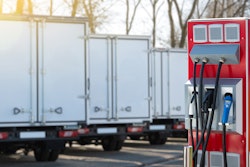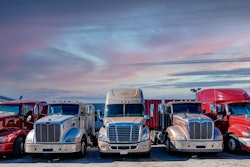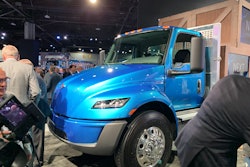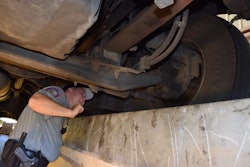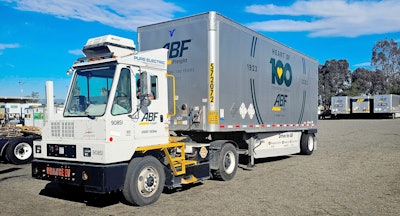
Low-mileage return to base applications have long been the target of early generation zero emissions trucks (ZETs), and almost nothing is lower mileage than a yard tractor that never leaves its terminal and the charging infrastructure that supports it.
The adoption of heavy electric trucks in the U.S. last year was mostly flat compared to the year before, according to a report compiled by CALSTART and published Tuesday.
Cargo vans continue to lead the zero-emissions vehicle segment with approximately 46,677 deployments. Cargo vans represented 91% of all ZET deployments last year. However, electric yard tractors have the greatest market share, accounting for roughly 2.82% of the total yard tractor fleet.
"They have proven to be high performing, cost effective, and operationally superior to their diesel-powered counterparts," according to the report. "Similar to ZE cargo vans, ZE yard tractors face relatively few barriers to adoption and are ideal for fleets due to their low mileage duty cycles, quick return on investment, and controlled operating environment where infrastructure can be more easily installed and managed."
 CALSTART
CALSTART
Battery electric yard tractors are currently deployed in 37 states, with the earliest deployments dating back to before 2017, according to CALSTART.
After an initial deployment of four electric terminal trucks in June 2022, ABF (CCJ Top 250, No. 15) has since increased its fleet to nine and has purchased five more for 2025 deployments.
"The Orange EV terminal trucks meet our operational requirements and expectations for safe, reliable and affordable service and performance," said ABF Freight President Matthew Godfrey.
Orange EV, a U.S. manufacturer of pure-electric yard trucks, said in May that multiple customers each own and operate more than 100 Orange EV trucks at sites across the United States and Canada, citing operational challenges and expense from diesel breakdowns, diesel fuel management costs, health and safety risks, driver fatigue, and downtime associated with diesel units.
Overall growth
All heavy duty segments (class 7 and 8) saw a positive year-over-year increase: refuse trucks (56%); yard tractors (30%) and heavy-duty trucks (1%). Nearly all of these deployments are battery electric, though 155 hydrogen fuel cell electric trucks have also been deployed, CALSTART noted.
There are now 17 states with more than 1,000 ZETs in the field.
Of the cumulative U.S. ZET deployments, CALSTART found that 39% were in states that have adopted the Advanced Clean Trucks regulation – states that represent just 27% of the nation’s total truck stock – and 11% of ZET deployments are in states that have signed the Multi-State Medium- and Heavy-Duty Zero Emission Vehicle Memorandum of Understanding (49% were in non-MOU states).
Maryland jumped into second place for ZET deployments in 2024, deploying 1,432 ZETs in just the last six months of 2024, and climbed from 15th to fifth nationally in cumulative ZETs. Maryland also had the highest percentage growth in ZET deployments among all states last year (up 439%), according to CALSTART.
Thirteen states more than doubled their year-end 2023 ZET totals in 2024, while 17 states deployed more ZETs last year than in 2023.




